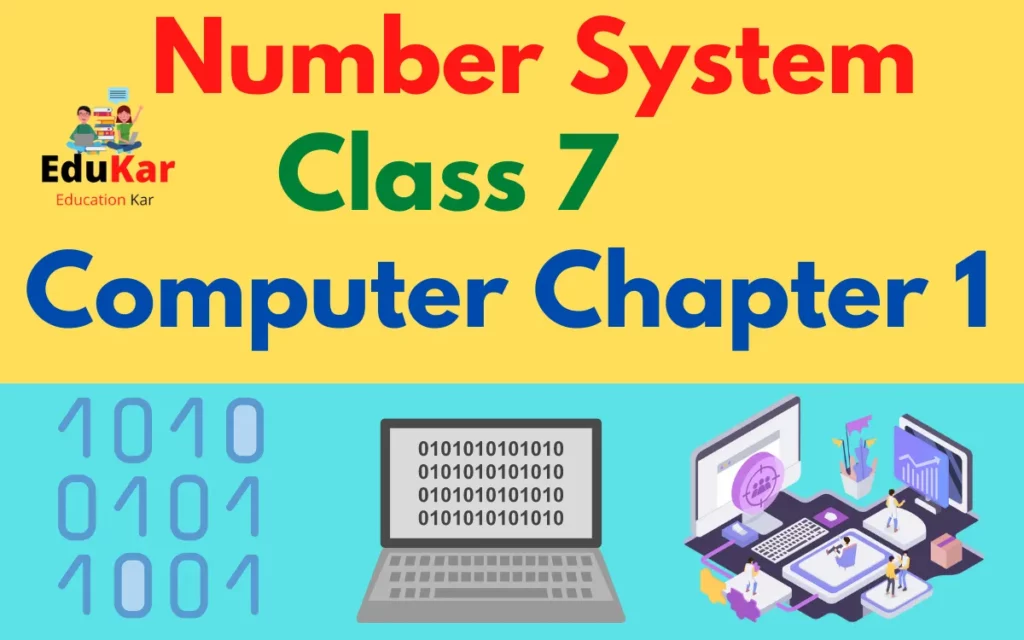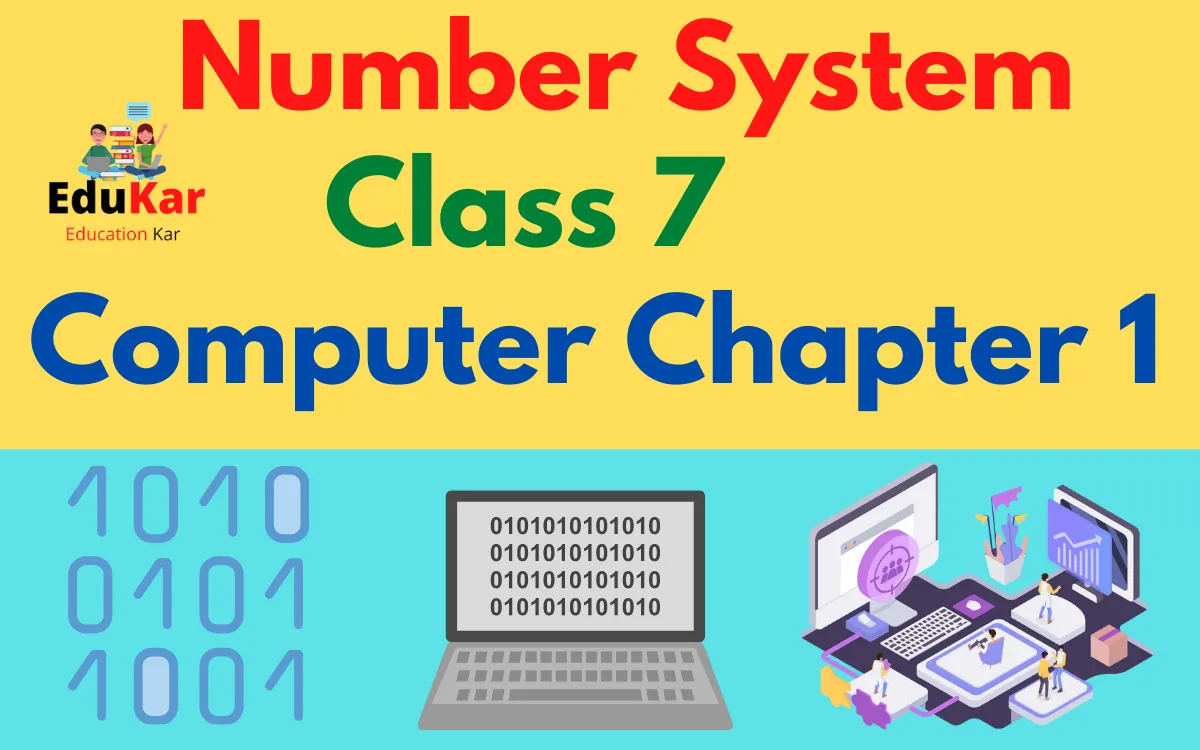
What is Number System?
Number systems are the technique to represent numbers in the computer system architecture, every value that you are saving or getting into/from computer memory has a defined number system.
Type of Number system:
There are 4 types of number system:
- Decimal number system.
- Binary number system.
- Octal number system.
- Hexadecimal number system.
1.Decimal number system
Decimal number system has only ten digits from 0 to 9. Every number(value) represents with 0, 1, 2, 3, 4, 5, 6, 7, 8 and 9 in this number system. The base of decimal number system is 10, because it has only 10 digits.
2. Binary number system
A Binary number system has only two digits that are 0 and 1. Every number (value) represents with 0 and 1 in this number system. The base of binary system is 2, because it has only two digits.
Also See: Binary to Text converter
3. Octal number system
Octal number system has only eight(8) digits from 0 to 7. Every number (value) represents with 0, 1, 2, 3, 4, 5, 6 and 7 in this number system. The base of octal number system is 8, because it has only 8 digits.
4. Hexadecimal number system
A Hexadecimal number system has sixteen (16) alphanumeric values from 0 to 9 and A to F. Every number(value) represents with 0, 1, 2, 3, 4, 5, 6, 7, 8, 9, A, B, C, D, E and F in this number system. The base of hexadecimal number system is 16, because it has 16 alphanumeric values. Here A is 10, B is 11, C is 12, D is 13, E is 14 and F is 15.
Table of Number Systems
| Number System | Base | Used Digit | Example |
|---|---|---|---|
| Decimal | 10 | 0,1,2,3,4,5,6,7,8,9 | 4562 |
| Binary | 2 | 0,1 | 101011101 |
| Octal | 8 | 0,1,2,3,4,5,6,7, | 437 |
| Hexadecimal | 16 | 0,1,2,3,4,5,6,7,8,9,A,B,C,D,E,F | 5FA17 |
Number System Conversions
- Decimal to Binary
- Binary to Decimal
- Decimal to Octal
- Octal to Decimal
- Octal to Binary
- Binary to Octal
- Decimal to Hexadecimal
- Hexadecimal to decimal
- Binary to Decimal
Class 7 Computer Chapter 1-Number System Solutions
Number System – Fill in the Blanks
Q1: The base of binary number system is __________.
Ans: The base of binary number system is __2___.
Q2 : The base of ___________ number system is 10.
Ans: The base of Decimal number system is 10.
Q3: Octal number system consists of ___________ digits.
Ans: Octal number system consists of 8 digits
Q4: In Binary addition, 1+1 equals to ____________.
Ans: In Binary addition, 1+1 equals to 0 with 1 carry.
Q5: ____________ number system is understood by computer system.
Ans: Binary number system is understood by computer system.
Q6: ___________ number system uses 16 digits, from 0 to 9 and letters A to F.
Ans: Hexadecimal number system uses 16 digits, from 0 to 9 and letters A to F.
Q7: In Binary subtraction, 1-1 equals to __________.
Ans: In Binary subtraction, 1-1 equals to 0.
Number System – True or False
Q1: You cannot perform arithmetic operations on binary numbers.
Ans: False.
Q2: Decimal number system consists of 10 digits, i.e. 0 to 9.
Ans: True.
Q3: Method to perform division of two binary numbers is not hte same as decimal numbers.
Ans: False.
Q4: 1 multiplied by 0 equal to 0.
Ans: True.
Q5: Charles Babbage introduce the concept of 0(zero).
Ans: False.
Q6: The numbers used in octal number system are 1 to 7.
Ans: False.
Number System- Application based Questions
Q1: Sonam’s computer teacher has asked her to convert an octal number to decimal. Suggest the method which she should use to convert octal number.
Ans: To convert an octal number to decimal number, start multiplying the digits of the number from the right hand side with increasing power of 8 starting from 0 and then calculating the sum of all the products.
Q2: The teacher has given assignment to Shubham on binary subtraction. Shubham is confused about how to subtract 1 from 0. Help him solving the problem.
Ans: The number is borrowed when 1 is subtracted from 0 (10-1=1).
Number System- Multiple Choice Questions
Q1: ____________ introduced the concept of 0(zero).
a) Ada lovelace b) Aryabhat c) Charles Babbage
Ans: Aryabhat.
Q2: A ___________ converts the decimal format into its binary equivalent.
a) Digital computer b) Cell phone c) Abacus
Ans: Digital computer
Q3: A computer understand only the ________ code.
a) English b) French c) Binary
Ans: Binary
Q4: In Binary multiplication, 1 X 1 equals to _____________.
a) 0 b) 1 c) 2
Ans: 1
Q5: To convert a decimal number into a binary number, divide the number by _______.
a) 2 b) 8 c) 10
Ans: 2
Number System- Answer the Following Questions
Q1: What are the rules to convert a decimal number into a binary number?
Ans: To convert a decimal number into a binary number, follow the below given steps:
- Divide the given decimal number with base 2.
- Write down the remainder and divide the quotient again by 2.
- Repeat the step 2 till the quotient is 0.
- Wtite the remainders obtained in each step in the reverse order to form the binary equivalent of the given decimal number, i.e., placing the least significant digit at the top and most significant digit at the bottom.
Q2: What are the rules to multiply two binary numbers?
Ans: The rules for performing multiplication using binary numbers is same as that of decimal numbers. The given table illustrate the multiplication of two binary digits.
| A | B | A X B = C |
| 0 | 0 | 0 X 0=1 |
| 0 | 1 | 0 X 1=1 |
| 1 | 0 | 1 X 0=1 |
| 1 | 1 | 1 X 1=1 |
Number System – Lab Session Activity
Q1: Convert the following decimal numbers into binary.
a) 68
Ans: 1000100
b) 987
Ans: 1111011011
c) 657
Ans: 1010010001
Q2: Convert the following binary number into decimal.
a) 1011
Ans: 11
a) 100110
Ans: 38
c) 10101
Ans: 21
Q3) Perform the binary addition on the following numbers
a) 10101+00111
Ans: Binary value: 10101+00111=011100, Decimal value: 21+7=28.
b) 1000101101+1001101
Ans: Ans: Binary value: 1000101101+1001101=01001111010, Decimal value: 557+77=634.
c) 1101+1001
Ans: Ans: Binary value: 1101+1001=010110, Decimal value: 13+9=22.
Find the Difference between the following:
a) 10011-01010
Ans: Binary value: 10011-01010= 01001
Decimal value: 19-10=9
b) 11001001-01100110=01100011
Ans: Binary value: 11001001-01100110= 01100011
Decimal value: 201-102=99
c) 111-001
Ans: Binary value: 111-001=0110
Decimal value: 7-1=6
Multiply the following Binary numbers:
a) 101 X 011
Ans: Binary value: 101 X 011=01111
Decimal value: 5 X 3=15
b) 1011 X 101
Ans: Binary value: 1011 X 101=0110111
Decimal value: 11 X 5= 55
c) 101010 X 1011
Ans: Binary value: 101010 X 1011=0111001110
Decimal value: 42 X11=462







